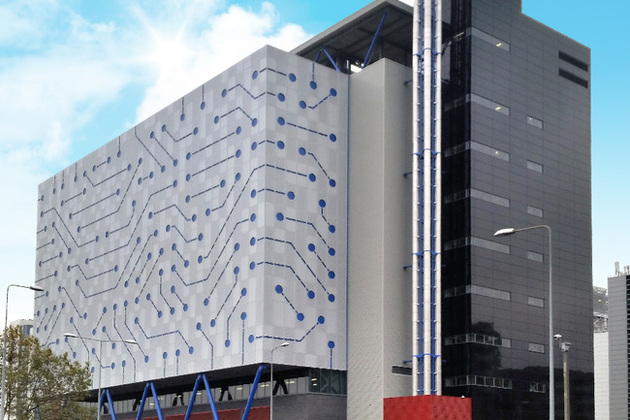How do smaller creatives help lessen the CO2 footprint?
Sustainability is one of the key topics in digital advertising in 2023, enough so that IAB compiled a comprehensive report on the topic. Based on this, we did our own guide for you to understand the topics better. We will cover topics such as compressing creatives, data centres, ad serving and carbon offsetting to help educate the advertising industry.

That focus forces agencies to assess and consider critically changing some of the processes they have been using. This is necessary to meet their targets of becoming more sustainable. However, more education is needed in the advertising industry to understand what parts contribute the most considerable amount of CO2 in marketing campaigns.
We have heavily focused on making digital ads more sustainable and will continue our contribution on making programmatic advertising green. Nexd is an intuitive ad builder, which aids in fast and flexible creative production, and helps you reach the sustainability targets of your campaigns. From this guide you can learn the following:
- How does advertisement size compression affect the CO2 footprint?
- What is the most polluting part of ad serving?
- How much greenhouse gas is produced by data centres?
- Where are data centres in Europe?
- How to reduce greenhouse gases in digital advertising?
- Does carbon offsetting actually work?
Sustainability is becoming increasingly important in advertising as consumers, companies, and governments recognise the need to address environmental and social challenges. Advertisers are starting to prioritise sustainable practices and promote environmentally-friendly products and services in their campaigns. This change in priorities reflects both a shift in consumer behaviour towards more sustainable products and a desire by companies to align themselves with environmental and social values.
Sustainability is becoming a key consideration for advertisers. This affects both their supply chain and their operations’ environmental impact. Many advertisers are taking steps to reduce their carbon footprint and improve their sustainability practices, from reducing waste to switching to renewable energy sources.
How does advertisement size compression affect the CO2 footprint?
Compressing ad creatives’ size can reduce the amount of data that needs to be transmitted and stored, leading to lower CO2 emissions from the servers and network infrastructure involved in delivering and keeping the ads. This can result in a reduction in the CO2 footprint of the advertising industry.
As you know, light-weight ads are our thing. We have a proprietary AI algorithm to optimise assets. We optimise the ad automatically when you upload or drag an asset to a specific asset slot. Our ads are 5-10x lighter compared to ads built in HTML. This process will result in faster load times, higher viewability and more return on the media budget. Thanks to the compressing of creative files and how our serving is set up, NEXD ads are also sustainable and, on average, help save at least 25-50% on CO2 emissions per campaign.
Read more about Nexd’s efforts on reducing CO2 in advertising from here.

What is the most polluting part of ad serving?
The most polluting part of ad serving is typically the energy consumption of the data centres, and servers that store and deliver the ads. Energy consumption results in greenhouse gas emissions and contributes to the overall CO2 footprint of the advertising industry.
How much greenhouse gas is produced by data centres?
Data centres are estimated to produce significant amounts of greenhouse gases, contributing to the overall CO2 footprint of the technology industry. According to recent estimates, data centres worldwide are responsible for approximately 2% of global greenhouse gas emissions. This figure is expected to rise as data storage and processing demand increases. In addition to the energy consumption of the servers, the manufacturing and transportation of data centre components also contribute to greenhouse gas emissions.
Where are data centres in Europe located?
Data centres in Europe are located in many countries across the continent. Some countries with the largest concentration of data centres include the United Kingdom, France, Germany, the Netherlands, Sweden, Ireland, and Finland.

In each of these countries, there are multiple cities and regions with high concentrations of data centres, such as London and the South East of England in the UK, the Ile-de-France region in France, the Rhein-Main area in Germany, the Randstad region in the Netherlands, the Stockholm area in Sweden, Dublin in Ireland, and the Helsinki metropolitan area in Finland.
Most of the largest data centres are in hot or temperate climates, consuming vast amounts of energy to keep them from overheating. Unfortunately, there is no way to know which data centre is processing your actions. Whether it’s located in a hot climate or the coolness of Scandinavia, for example, the DigiPlex Stockholm complex will divert its hot air to heat water running through the city’s district heating system. It will eventually heat some 10,000 apartments.
Naturally, things are less rosy where no natural resources can cool the data centres, such as in the desert of Nevada or Bangalore, India. You can read more about the energy consumption of data centres from Yale’s Environment360.
How to reduce greenhouse gases in digital advertising?
There are several ways to reduce greenhouse gas emissions in digital advertising. However, we can’t control all of those parts.
- Energy Efficiency: Improving the energy efficiency of data centres and servers through measures such as using more energy-efficient hardware and improving cooling systems.
- Renewable Energy: Switching to renewable energy sources for powering data centres and other components of the digital advertising ecosystem.
- Ad Optimization: Minimizing the data transmitted and stored through ad optimisation techniques, such as reducing ad file sizes and using more efficient ad formats.
- Industry Collaboration: Encouraging collaboration within the digital advertising industry to find and implement more sustainable practices.
- Offsetting: Offsetting carbon emissions through investment in renewable energy projects or other initiatives that remove carbon from the atmosphere.
- Transparency and Reporting: Adopt transparent reporting practices to track and disclose the carbon footprint of digital advertising, and set targets to reduce emissions over time.
- Consumer Education: Educate consumers about the environmental impact of digital advertising and encourage them to make informed choices about the products and services they support.
By implementing these strategies, the advertising industry can work towards reducing the carbon footprint of digital advertising and contributing to a more sustainable future. The industry needs to take action now to reduce emissions, as the growing demand for digital advertising will only increase the industry’s environmental impact in the years to come.
Does carbon offsetting actually work?
Carbon offsetting, also known as carbon credits, is a mechanism that aims to balance the carbon emissions produced by individuals or organisations by funding initiatives that reduce or remove carbon from the atmosphere.
The effectiveness of carbon offsetting is debatable, as it depends on the programs and initiatives supported. Some argue that carbon offsetting can play a role in reducing overall carbon emissions and contribute to a low-carbon future. In contrast, others argue that it is merely a way for individuals and organisations to absolve their carbon guilt without making substantive changes to their behaviour.
While carbon offsetting can help to reduce emissions in some cases, it should not be seen as a substitute for reducing emissions at the source. It is essential for individuals and organisations also to take action to reduce their carbon footprint, such as adopting more sustainable practices, using renewable energy, and investing in energy-efficient technology.
Carbon offsetting can be an effective tool to mitigate carbon emissions. Still, its impact and efficacy depend on the specific initiatives being supported. It should be seen as one component of a broader strategy to reduce carbon emissions and achieve a more sustainable future.

Get Started
Sign up to Nexd Campaign Manager for a free 14-day trial and start creating environment-friendly and highly engaging programmatic creatives!
